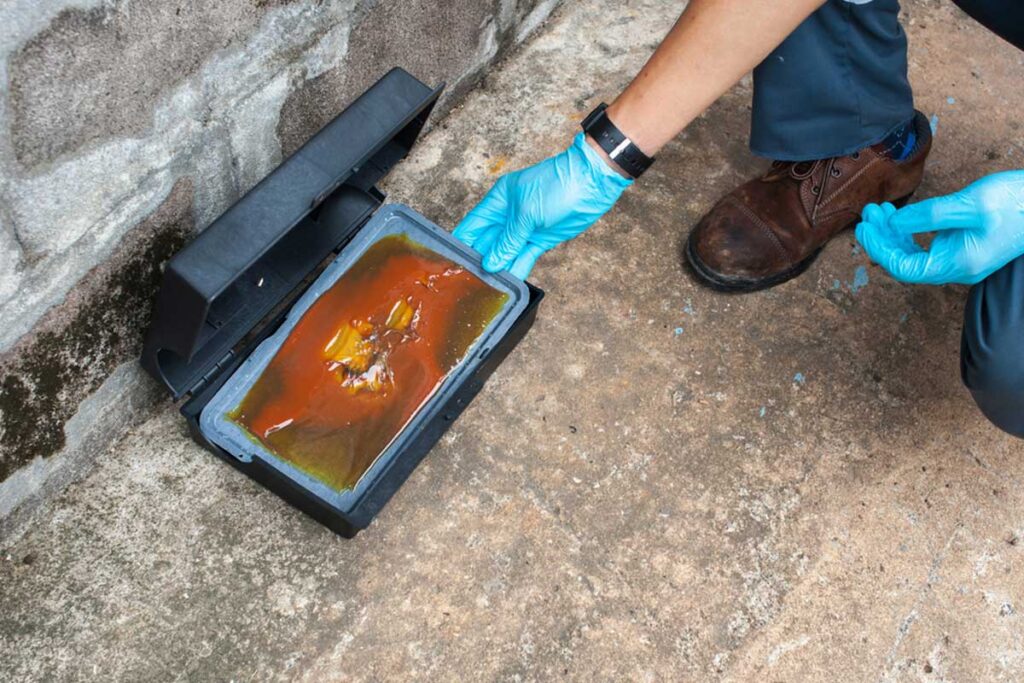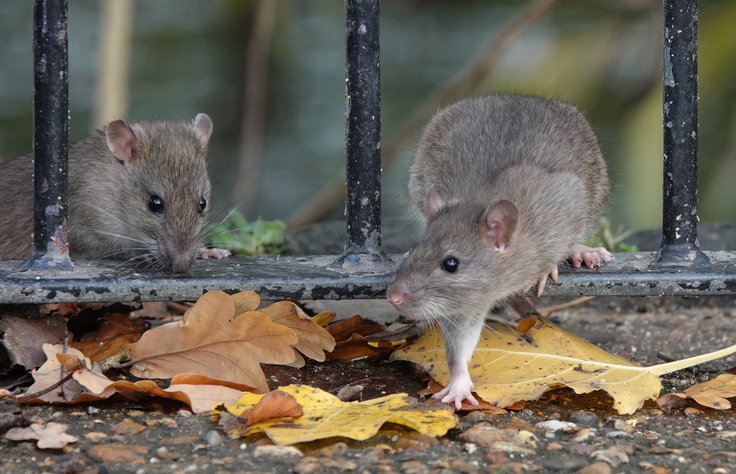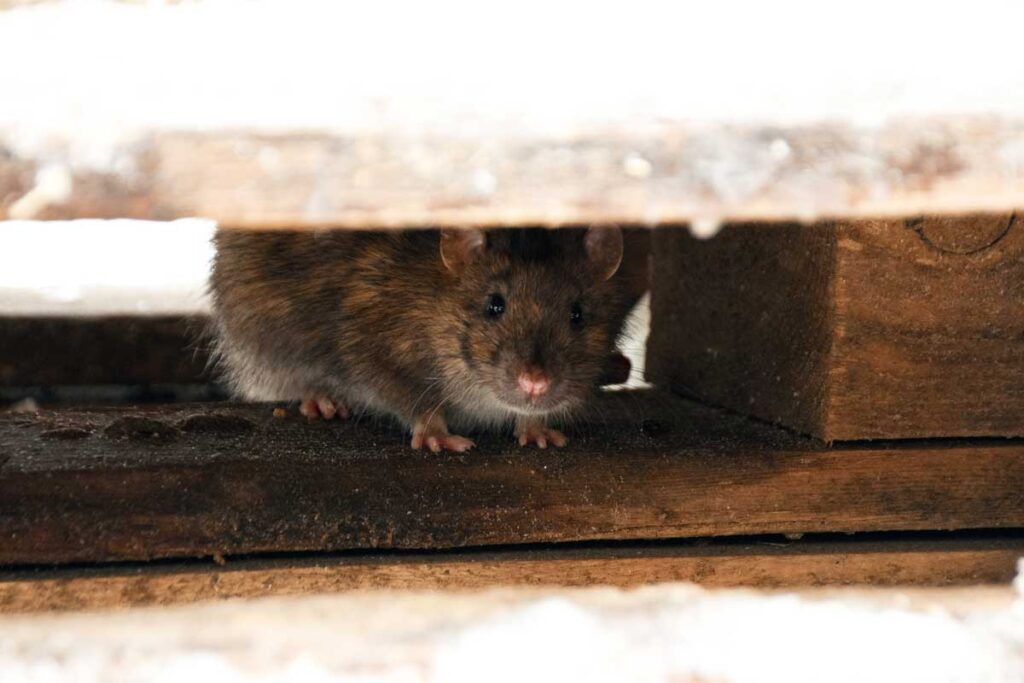A mouse infestation in a home is a common but often underestimated issue that many homeowners face. Mice, with their small size and ability to squeeze through the tiniest of gaps, can easily find their way into houses. Once inside, they rapidly multiply, creating not just an unsanitary condition, but a significantly challenging problem to control. They can contaminate food, cause extensive property damage, and carry diseases that pose serious health risks. Therefore, a seemingly small issue can quickly escalate into a considerable concern.

Table of Contents
- Understanding the Mouse: Habits and Risks
- Prevention Strategies: Make Your Home Unattractive to Mice
- Effective Barriers: Sealing Points of Entry
- Natural Deterrents: Scents and Plants Mice Dislike
- Tools and Techniques: From Pets to Ultrasonic Repellers
- Professional Solutions: When to Call for Help
- Seasonal Considerations: Timing Your Mouse Prevention
- Conclusion
Understanding the importance of prevention and control in dealing with mice is the first step toward maintaining a mouse-free home. Prevention focuses on making your home less attractive and accessible to these rodents. It involves routine practices such as proper sanitation, regular maintenance of potential entry points, and careful food storage. On the other hand, control involves strategies to handle an existing mouse infestation effectively. This can range from the use of mousetraps and deterrents to engaging professional pest control services when necessary.
This comprehensive guide aims to provide you with practical and effective strategies to keep mice out of your house, ensuring a safe and comfortable living environment. By following these prevention and control measures, you can significantly reduce the risk of a mouse infestation and deal with any existing problem in a timely and efficient manner.
Understanding the Mouse: Habits and Risks
Habits of Mice and How They Can Enter a House
Mice are incredibly agile creatures with a knack for squeezing through the tiniest of gaps, some as small as a pencil’s diameter. Due to their small size and flexible bodies, they can climb walls and traverse along wires or ropes, enabling them to access higher points of a house that might seem unreachable. They are mostly nocturnal, being most active from dusk till dawn. These rodents seek warm and cozy spaces for nesting, which often leads them indoors, especially during colder months.
Health Risks Associated with a Mouse Infestation
The health risks linked with a mouse infestation are serious and cannot be overlooked. Mice are known carriers of numerous diseases such as Hantavirus, Salmonellosis, and Leptospirosis. These diseases can spread to humans through direct contact, through their droppings, urine, or nesting materials, or indirectly via fleas and mites that infest the mice. Moreover, they can trigger allergies and respiratory issues due to the allergens present in their droppings and dander.
Signs of a Mouse Infestation
Recognizing the signs of a mouse infestation early can help in taking timely action. Here are some typical signs:
- Droppings – Mouse droppings, typically small and dark, are a clear sign of infestation. They can often be found along walls, inside cupboards or under sinks.
- Gnaw Marks -Mice have strong teeth that they use to gnaw on almost anything, including electrical wires, furniture, and packaging.
- Sounds – Nocturnal scratching or scuttling noises, particularly under floorboards or behind walls, can indicate the presence of mice.
- Unpleasant Odor – A strong, musky odor might be present, especially in enclosed areas.
- Nesting Materials: The discovery of shredded paper, fabric, or plant matter can suggest mouse activity.
Certain Foods Attracting Mice into the House
Mice are omnivores, but their diet primarily consists of grains and seeds. They are, however, opportunistic feeders and will eat almost anything when their primary food sources are scarce. This includes food left out in homes, such as fruit, vegetables, cereals, meat, and dairy products. Therefore, leaving food out, especially overnight, can attract mice into your home. Even pet food and birdseed can lure them in, so it’s crucial to store food securely and maintain cleanliness to deter these unwanted guests.
Prevention Strategies: Make Your Home Unattractive to Mice
A clean and clutter-free environment is crucial in preventing a mouse infestation. Mice are attracted to clutter as it provides them with numerous hiding places and potential nesting material. Regularly cleaning your home and keeping it clutter-free, particularly areas like the garage, basement, and attic, can significantly deter these rodents. Be sure to dispose of or recycle old newspapers, cardboard, and other debris promptly. The less clutter you have, the fewer places mice have to hide.
Garbage Management in Mouse Prevention
Effective garbage management plays a pivotal role in keeping mice away. Mice are attracted to the scent of food waste and can easily chew through plastic garbage bags and thin bins. It is recommended to store your garbage in sturdy, sealable containers and dispose of it regularly. Additionally, keep the area around your trash cans clean, as spilled garbage can attract mice.
Tips for Maintaining Food Storage Areas
Mice have an excellent sense of smell and can detect food from a distance. Therefore, secure food storage is vital in preventing an infestation. Store food in airtight containers made of glass or heavy-duty plastic. This includes pet food and birdseed, which should also be stored in secure containers. Avoid leaving food out on counters, and remember to clean up any food spills promptly.
Suggestions for Maintaining Attics and Basements
Attics and basements are often attractive to mice due to their quiet and undisturbed nature. Regularly inspect these areas for signs of mice such as droppings, gnaw marks, or nesting materials. Seal any small holes or cracks with caulk, steel wool, or a combination of both. De-clutter these spaces and store items in plastic containers rather than cardboard boxes which mice can easily chew through.
Landscaping in Mouse Prevention
Proper landscaping can play a significant role in deterring mice. Mice can use overgrown vegetation, such as bushes and vines, to gain access to your home. Regularly trim plants, especially those close to your home, to eliminate potential pathways. Additionally, maintain a tidy garden by promptly cleaning up fallen fruits or nuts, which could attract mice. It’s also advisable to store firewood at least a foot off the ground and away from your house to discourage mice from nesting.
Effective Barriers: Sealing Points of Entry
How to Seal Small Holes and Cracks
Sealing off potential entry points is one of the most effective ways to prevent a mouse infestation. Mice can squeeze through holes as small as a quarter of an inch in diameter, and any small cracks or holes could potentially offer them an entryway into your home. Start by thoroughly inspecting the exterior and interior of your home for any such openings, paying particular attention to areas where utility pipes and vents enter your home.
Materials like steel wool and caulk can be effective in sealing small holes and cracks. Mice find it difficult to gnaw through these substances, making them excellent for blocking entry points. For larger gaps or holes, consider using hardware cloth, sheet metal, or cement. Remember, it’s not just about blocking the hole, but also about using a material that mice can’t chew through.
Effectiveness of Weatherstripping Doors and Windows
Weatherstripping is another effective strategy for keeping mice out of your home. Mice can squeeze through small gaps under doors and windows, and weatherstripping can help seal these off. Besides preventing mouse entry, weatherstripping also offers the additional benefit of improving your home’s energy efficiency by reducing drafts.
When choosing weatherstripping materials, opt for those that provide a sturdy seal and can withstand gnawing. Door sweeps are particularly effective for exterior doors. For windows, consider adhesive-backed V-strip or tension seal weatherstripping. It’s important to regularly check and replace weatherstripping as needed, ensuring it maintains a secure seal.
Natural Deterrents: Scents and Plants Mice Dislike
Several common household items can act as effective deterrents against mice. Peppermint oil, for instance, is a popular choice. Mice dislike the strong smell, and placing cotton balls soaked in peppermint oil near potential entry points can discourage them. Similarly, cloves and cayenne pepper are known to deter mice due to their strong scents.
Another method includes the use of mothballs. While they’re primarily used to deter moths, their strong odor is also unattractive to mice. However, care should be taken with mothballs as they can be toxic to children and pets.
Specific Scents That Mice Dislike
Mice have a keen sense of smell, and certain strong or unpleasant odors can act as effective deterrents. Essential oils such as peppermint, citronella, and eucalyptus are known to repel mice. Ammonia is another substance that mice tend to avoid as it smells like predator urine, causing mice to steer clear. However, it should be used cautiously due to its harmful fumes.
Specific Plants That Can Deter Mice
Certain plants can help in your quest to keep mice out of your home. Mice dislike the strong odors of some plants, making them effective natural deterrents. These include mint, which can be planted around the foundation of your home to deter mice. Be careful though, as mint can spread quickly and take over your garden.
Other plants that repel mice include onions, garlic, and marigolds. Incorporating these plants into your garden can provide an added layer of protection against these unwelcome rodents. However, it’s essential to remember that plants alone may not completely deter mice, and should be used as part of a comprehensive prevention plan.
Tools and Techniques: From Pets to Ultrasonic Repellers
The Role of Pets in Keeping Mice Away
Cats, in particular, have been used for centuries as a natural form of pest control. Their hunting instincts can make them effective deterrents against mice. However, not all cats are skilled or interested hunters, and they might not eliminate a mouse problem entirely. Dogs, particularly breeds like Terriers, can also deter mice, but again, their effectiveness varies. Remember, while pets can help control a mouse population, they aren’t a guaranteed solution, and some risks are associated, such as potential disease transmission.
The Effectiveness of Ultrasonic Repellers
Ultrasonic repellers are electronic devices designed to emit high-frequency sound waves that are said to be uncomfortable for pests like mice, thus deterring them. Popular brands include Neatmaster, TBI Pro Ultrasonic Pest Repeller, and BRISON Ultrasonic Pest Reject Repeller.
While some users report success with these devices, scientific studies on their effectiveness are mixed. Ultrasonic waves don’t pass through walls or furniture, limiting their coverage. They might provide some level of deterrence but are unlikely to solve a severe infestation. Using these devices in conjunction with other prevention and control measures is likely to yield the best results.
Use and Effectiveness of Traditional Mousetraps
Traditional mousetraps remain one of the most effective methods of controlling a mouse infestation. Brands like Victor Metal Pedal Mouse Traps and Tomcat Press ‘N Set Mouse Traps are reliable and user-friendly options.
There are different types of mousetraps available:
- Snap Traps – These are the most common type, which use bait to lure the mouse onto a trigger mechanism that releases a kill bar.
- Live Catch Traps – These traps are designed to catch the mouse without killing it so that it can be released outside.
- Glue Traps – These consist of a sticky surface that traps the mouse when it runs over it. However, these are considered inhumane by some due to the prolonged suffering they can cause to the trapped mouse.
When using mousetraps, placement is key. Mice tend to travel along walls, so placing traps perpendicular to walls with the trigger section facing the wall can be effective. Bait, such as peanut butter, chocolate, or bacon, can be used to lure mice into the trap. Regularly check and promptly dispose of any caught mice, and reset the traps until you stop catching mice.
Remember, while mousetraps can be effective in controlling an infestation, they are most successful when used in conjunction with prevention techniques and possibly professional pest control services in the case of severe infestations.
Professional Solutions: When to Call for Help
There are situations when a mouse problem may be too large or difficult to handle on your own. In such cases, hiring professional pest control services can be the most effective solution. Professionals are equipped with the knowledge, tools, and techniques to deal with a mouse infestation efficiently and safely.
Companies such as Orkin, Terminix, and Rentokil offer specialized rodent control services that include inspection, treatment, and follow-up visits. They can help identify and seal potential entry points, set up bait stations or traps, and monitor the situation until the infestation is fully under control. It’s important to discuss the methods and products they use and any possible impacts on the household, particularly if you have children or pets.
How Often You Should Check Your Home for Signs of Mice
Checking your home for signs of mice should be a regular part of your household maintenance. It’s recommended to do a thorough inspection at least once every season, or every three months. As mice tend to seek shelter indoors during colder months, paying particular attention to potential signs of infestation during fall and winter is beneficial.
Look for typical signs such as droppings, gnaw marks, nesting materials, or the characteristic musky odor. Remember to inspect both the inside and the outside of your home, including less-visited areas like the attic, basement, and garage.
Should you notice any signs of a mouse infestation, it’s important to act quickly. Mice multiply rapidly, and a small problem can turn into a major issue in a matter of weeks. Early detection and intervention are key to preventing a full-blown infestation.
Seasonal Considerations: Timing Your Mouse Prevention
The Best Season to Start Mouse Prevention Measures
Mouse prevention is a year-round job, but there are certain times of the year when taking preventative action becomes particularly crucial. As the weather starts to cool in the fall, mice and other rodents begin looking for warm places to shelter for the winter – and your home can look particularly inviting.
This is why fall is the best time to start ramping up your mouse prevention measures. Begin by thoroughly inspecting your home for potential entry points and sealing them off. Ensure that your weatherstripping is in good shape and that your windows, doors, and vents close securely. Indoors, start paying closer attention to keeping food sealed and stored properly and maintaining a clean and clutter-free environment.
However, prevention shouldn’t stop once winter hits. Mice are resourceful creatures, and they may still find ways to invade your home in search of food and warmth. Continue with your prevention efforts throughout the winter months.
As spring arrives and the weather warms, mice may start to move back outdoors, but that doesn’t mean your job is done. Spring is an excellent time to check for any new potential entry points that may have formed over the winter due to weathering and to replenish your outdoor deterrents like plants and landscaping that might have been damaged or depleted during the winter.
In the end, the key to effective mouse prevention is consistency and vigilance, regardless of the season.
Conclusion
Mouse infestations can pose serious health risks and damage to your home. From contaminating food sources with their droppings to causing structural damage by gnawing on walls and wiring, the issues that mice can create are significant and often costly. Not to mention, they breed rapidly, and a small problem can escalate into a full-blown infestation in a matter of weeks.
Therefore, implementing effective mouse prevention and control strategies isn’t just beneficial – it’s essential. Prevention methods such as keeping your home clean and clutter-free, sealing potential entry points, using natural deterrents, and employing tools like mousetraps or ultrasonic repellers, can make a substantial difference in keeping these unwelcome guests at bay.
But remember, it’s not enough to take action only when signs of mice are already present. Proactively working on prevention is the most effective way to keep your home mouse-free. This includes regular checks of your home, especially as the seasons change, to spot any signs of infestation early.
Furthermore, don’t hesitate to seek professional help if you suspect an infestation is beyond your control. Specialists have the knowledge and tools to address the problem efficiently and prevent it from recurring.
Ultimately, keeping mice out of your house requires a comprehensive, proactive, and consistent approach. With the right knowledge, strategies, and actions, you can protect your home and ensure a safe and healthy living environment for you and your family.




